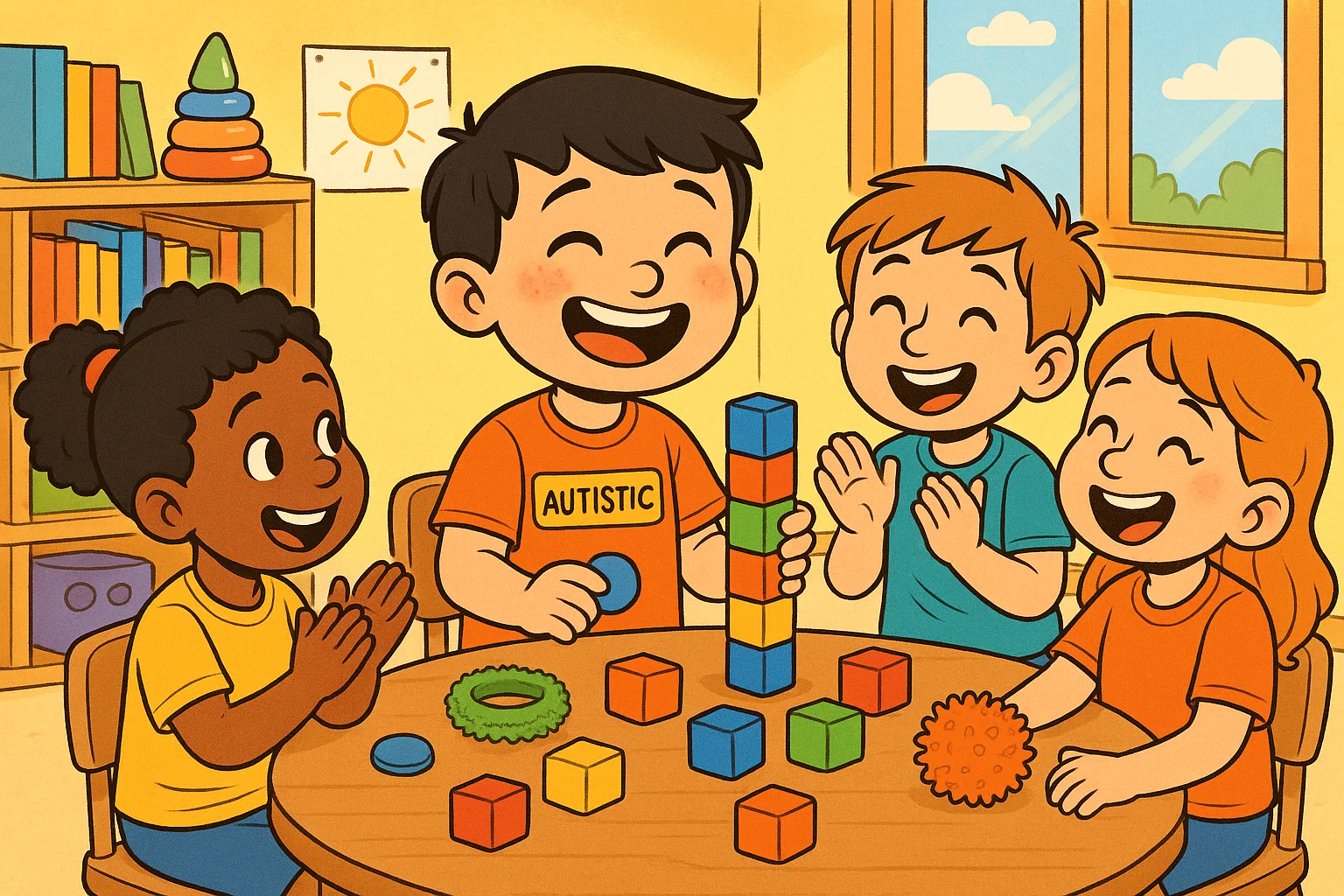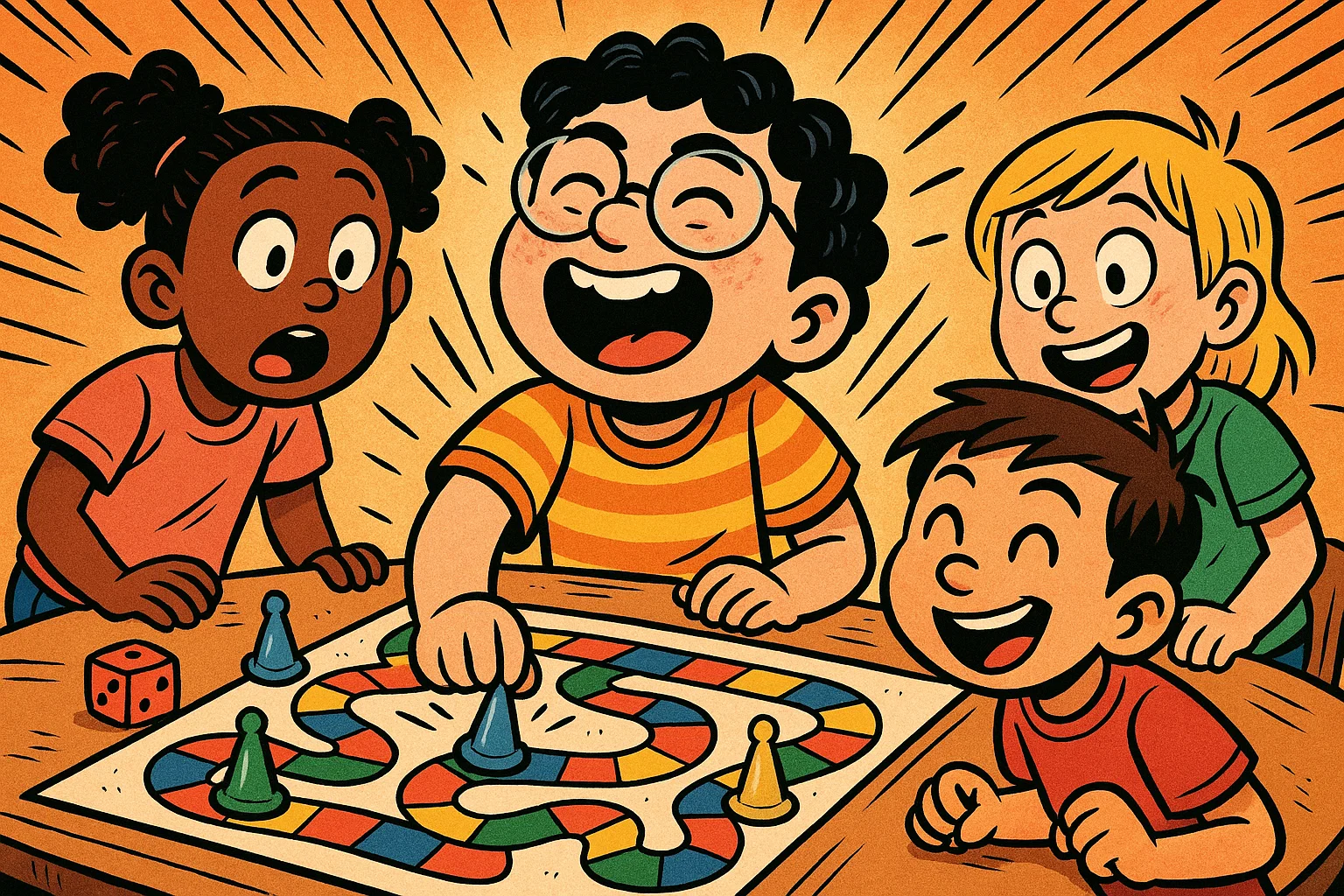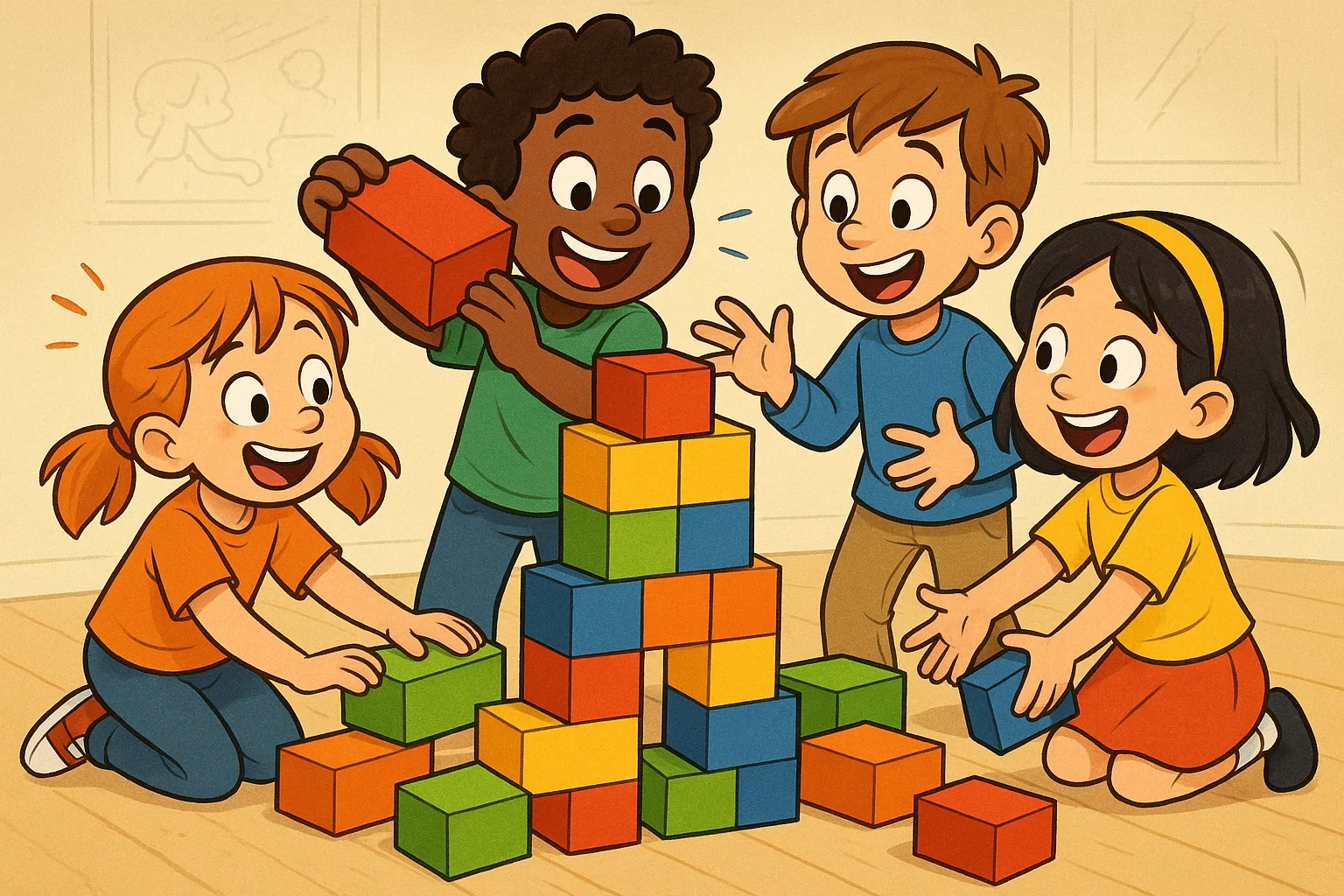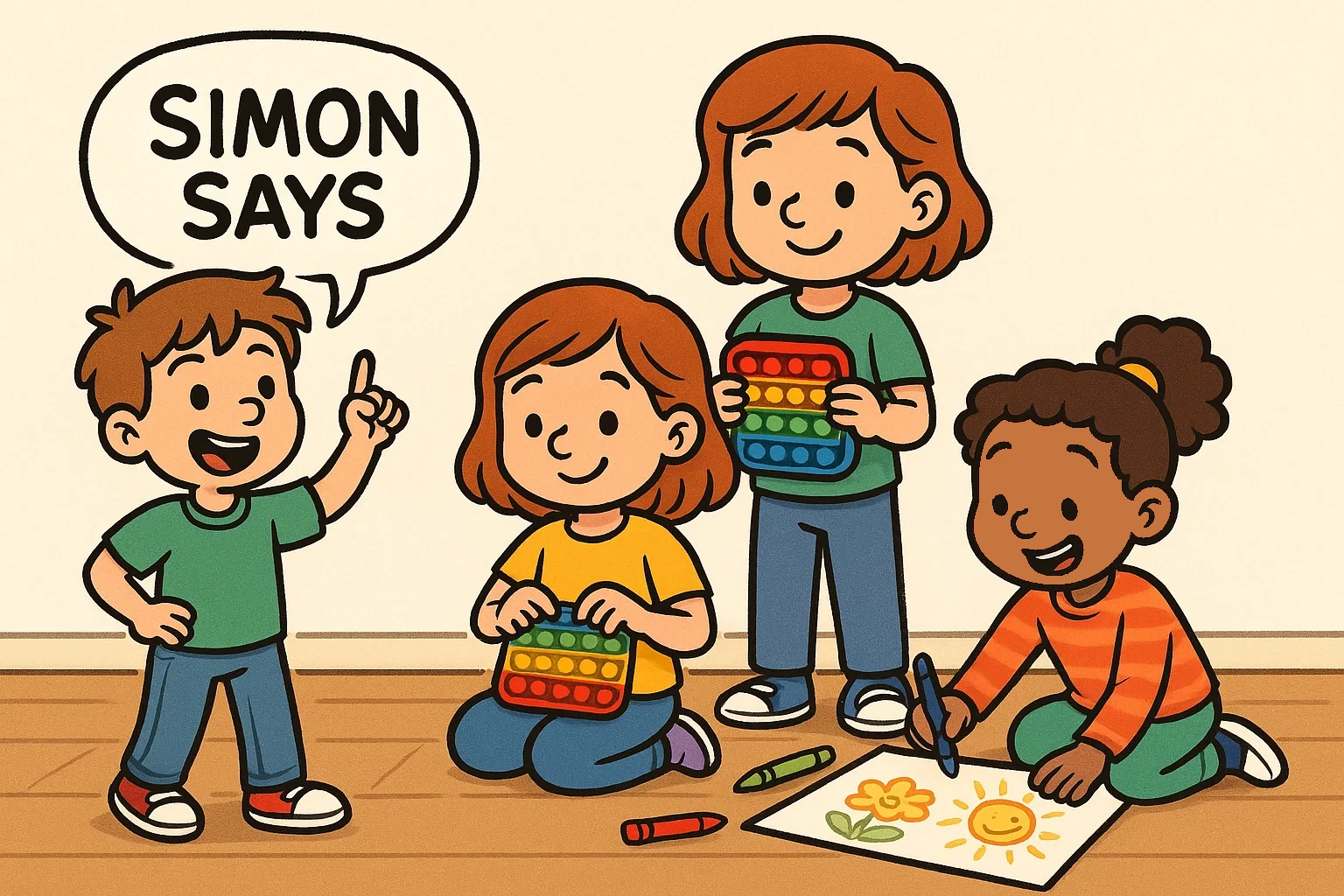Social Skills Activities for Children with Autism: Games to Help Build Social Skills

Helping children with autism develop meaningful social interactions can feel overwhelming, but with the right activities and approach, you can create positive experiences that build essential communication skills.
This comprehensive guide provides practical, evidence-based strategies to help your child navigate social situations with confidence while making learning enjoyable and engaging.
Importance of Social Skills Activities for Autism
Developing social skills is the key to confidence and meaningful communication. For children with autism, this path can be challenging, but the right activities and approach will turn it into an exciting adventure.
Why social skills activities are crucial for autistic children 🌟
Social skill development forms the foundation for meaningful relationships and successful community participation. For children on the autism spectrum, these skills often require explicit teaching rather than natural acquisition. According to the CDC, early intervention in social skills can lead to improved outcomes in academic performance, emotional regulation, and overall quality of life.
Autistic children often struggle with reading social cues, understanding nonverbal communication, and interpreting the unspoken rules of social interaction. Structured activities provide a safe environment where children can practice these skills without the unpredictability of spontaneous social situations.
“When we provide consistent, structured opportunities for social learning, we’re giving autistic children the tools they need to connect with others,” explains Dr. Sarah Johnson, a pediatric developmental psychologist with over 15 years of experience working with autism spectrum disorder.
How activities for autism improve social interaction
Well-designed social activities create predictable frameworks that help autistic children understand social expectations. These activities work by:
- Breaking complex social interactions into manageable components
- Providing repeated practice opportunities in controlled environments
- Allowing children to experience success before facing more challenging social situations
- Building confidence through positive reinforcement and gradual skill development
The role of fun social skills games
Games naturally motivate children to participate while disguising skill-building as play. Fun social skills activities help children develop important social behaviors without feeling like they’re in a formal learning environment. Board games, role-playing activities, and interactive exercises teach children how to:
- Take turns and follow social rules
- Practice conversation skills in low-pressure settings
- Learn appropriate social responses through repetition
- Develop problem-solving skills collaboratively
Social Skills Games for Autistic Child

To make learning fun, turn it into a game. Here’s a list of engaging activities that will help develop essential social skills.
Role-playing and act it out games
Role-playing provides safe spaces for children to practice different social scenarios before encountering them in real life. These activities help autistic children rehearse appropriate responses and build confidence in social situations.
Effective role-playing activities include:
- Restaurant scenarios (ordering food, saying please and thank you)
- Playground interactions (asking to join games, handling conflicts)
- Classroom situations (raising hands, asking for help)
- Family gatherings (greeting relatives, participating in conversations)
Start with familiar scenarios and gradually introduce more complex social situations as your child becomes comfortable with the process.
Board games for social skill development
Board games naturally teach important social skills like turn-taking, following rules, and handling winning or losing gracefully.
| Game Type | Skills Developed | Recommended Ages |
| Cooperative games (Pandemic Junior) | Teamwork, shared problem-solving | 6+ years |
| Turn-based strategy (Connect Four) | Patience, planning ahead | 5+ years |
| Memory games (Memory Match) | Attention, following sequences | 4+ years |
| Communication games (Guess Who?) | Asking questions, describing | 6+ years |
Emotion cards and matching games
Visual learning tools like emotion cards help autistic children identify and understand different feelings, both in themselves and others. These games teach emotional vocabulary and help children recognize facial expressions and body language.
Create personalized emotion cards using photos of family members or the child themselves displaying different emotions. This personal connection often increases engagement and understanding.
Staring contests and face games
Face games encourage eye contact and facial expression recognition in a playful, non-threatening way. Start with brief exercises and gradually increase duration as comfort levels improve.
Simple face games include:
- Mirror games (copying facial expressions)
- Emotion guessing (showing feelings through facial expressions)
- Eye contact challenges with timers
- Silly face competitions
How to Teach Skills to a Child with Autism
Even the most complex skills can be mastered by breaking them down into simple steps. These practical tips will help you make the learning process effective and enjoyable.
Effective ways to teach children on the autism spectrum
Teaching interpersonal abilities to autistic children requires patience, consistency, and individualized approaches. Every child learns differently, and what works for one may not work for another. The key principles include:
Start with your child’s interests: If your child loves trains, incorporate lessons using train scenarios or train-themed games. This connection increases motivation and engagement.
Use concrete examples: Abstract concepts become clearer when demonstrated with specific, observable behaviors. Instead of saying “be nice,” show exactly what nice behavior looks like in different situations.
Practice in natural settings: Once abilities are learned in structured exercises, practice them in real-world environments like grocery stores, parks, or community centers.
Using stories and video modeling to help your child
Structured stories provide clear, visual narratives that explain situations and appropriate responses. These personalized stories help children understand what to expect and how to behave in specific circumstances.
Video modeling allows children to see successful interactions demonstrated by peers or adults. Studies posted on Heliyon show that children with autism often learn more effectively through visual demonstration than verbal instruction alone.
Creating effective stories involves:
- Using simple, clear language appropriate for your child’s comprehension level
- Including visual supports like photographs or illustrations
- Focusing on positive behaviors rather than what not to do
- Reading stories multiple times before encountering the actual situation
Adapting exercises for autism spectrum disorder
Successful adaptation considers each child’s unique sensory needs, communication style, and learning preferences. Some children may need exercises broken into smaller steps, while others might require additional visual supports or sensory breaks.
Common adaptations include:
- Reducing group sizes for children who feel overwhelmed in large groups
- Providing noise-canceling headphones during loud exercises
- Using picture schedules to show sequences
- Offering choices between different learning opportunities
Creating a calm-down kit and retreat zone
Every social skills session should include a designated quiet space where children can retreat when feeling overwhelmed. A well-stocked calm-down kit might include fidget toys, weighted blankets, noise-canceling headphones, or preferred sensory items.
Teaching children to recognize when they need a break and how to use these tools appropriately is an important social skill itself.
Using visual aids and supports 📊
Visual supports significantly improve comprehension and reduce anxiety for many autistic children. These tools provide consistent, clear information that children can reference independently.
Effective visual aids include:
- Picture schedules showing activity sequences
- Social rules charts with visual reminders
- Emotion thermometers for self-regulation
- Choice boards for activity selection
- Visual timers showing activity duration
Group Activities for Social Interaction

Team activities are a great way to learn how to work together and build friendships. These games will help your child feel like a part of a group.
Name game and icebreakers
Simple name games help children practice greetings and remembering others’ names. Start with small groups of 2-3 children and gradually increase group size as comfort levels improve.
Effective icebreaker activities:
- Name and gesture combinations (saying name while doing a simple movement)
- Name rhymes or alliterations
- Name association games using interests or favorite things
- Visual name tags with pictures
Sharing time and turn-taking activities
Turn-taking forms the foundation of successful social interaction. These activities teach patience, respect for others, and conversation skills in structured formats.
Create visual turn-taking supports using timers, talking sticks, or picture cards showing whose turn comes next. This structure reduces anxiety and prevents conflicts during group activities.
Group sports and outdoor obstacle courses
Physical activities provide natural opportunities for teamwork, communication, and following directions together. Adapt traditional sports to ensure success for all participants.
Modifications for group sports:
- Use larger, softer balls for easier catching
- Reduce field sizes to minimize overwhelming spaces
- Create cooperative goals rather than competitive ones
- Provide clear, simple rules with visual reminders
Sensory bins and scientific slime experiments
Sensory activities naturally encourage parallel play and can lead to cooperative exploration. These activities provide conversation starters and shared experiences that build connections between children.
Scientific experiments teach following directions together, sharing materials, and celebrating discoveries as a group. The concrete nature of these activities often appeals to autistic children’s learning styles.
What Would You Do? and How Would You Feel? scenarios
Scenario-based discussions help children practice problem-solving and perspective-taking in safe environments. Present realistic situations that children might encounter and explore different response options together.
Example scenarios:
- Someone takes your toy without asking
- A friend seems sad at recess
- You accidentally bump into someone
- Someone invites you to play a game you don’t know
Specific Activities to Build Social Skills

Not sure where to start? Here are some specific ideas you can use right now to begin developing social skills through play.
Hula hoop boundaries
Physical boundary activities help autistic children understand personal space concepts visually and kinesthetically. Hula hoops provide clear, concrete boundaries that children can see and feel.
Practice different social distances using hula hoops – close family distance, friend distance, and stranger distance. This visual representation makes abstract concepts concrete and understandable.
Simon Says and Line Up
Following directions games teach listening skills, attention to others, and group participation. These activities also practice impulse control and following social rules.
Modify traditional games to include social elements like “Simon says give someone a high-five” or “Simon says tell someone they did a good job.”
Building and construction activities
Collaborative building projects naturally require communication, sharing materials, and working toward common goals. These activities appeal to many autistic children’s interests while building social skills.
Benefits of construction activities:
- Natural conversation starters about plans and ideas
- Practice asking for help or materials
- Sharing tools and taking turns with preferred pieces
- Celebrating completed projects together
Music and movement games
Musical activities engage multiple senses and often reduce social anxiety through rhythm and predictable patterns. These activities encourage participation without requiring complex verbal communication.
Circle songs, dance games, and musical instruments provide structured ways to interact with others while enjoying shared experiences.
Interactive playdates
Structured playdates provide controlled social practice with familiar peers. Plan activities in advance, keep groups small, and have backup plans for different energy levels or interests.
Successful playdate elements:
- Predetermined activities with clear expectations
- Adult facilitation available when needed
- Sensory breaks built into the schedule
- Familiar environment and materials
Using fidget toys and sensory sound resources
Sensory tools can facilitate social interaction by reducing anxiety and providing comfort during social activities. Some children focus better on conversations when their hands are busy with fidget items.
Share sensory resources during group activities to encourage interaction and conversation about preferences, textures, or favorite items.
Mindfulness exercises 🧘
Mindfulness activities teach self-awareness and emotional regulation, important foundations for successful social interaction. These exercises can be done individually or in small groups.
Simple breathing exercises, body awareness activities, and gratitude practices help children develop the internal awareness necessary for reading their own social and emotional needs.
Coloring and sorting with snacks
Parallel activities like coloring provide comfortable ways for children to be near others without pressure for direct interaction. These activities often naturally lead to conversations about preferences, sharing materials, or admiring each other’s work.
Incorporating snacks adds another social element through sharing, trying new foods together, or discussing preferences.
FAQ
How often should we practice social skills activities?
Consistency is more important than duration. Daily 15-20 minute sessions work better than longer, infrequent sessions. Children with autism benefit from regular practice to maintain and build upon learned skills.
What if my child refuses to participate in social activities?
Start with your child’s interests and gradually introduce social elements. If your child loves cars, begin with car-themed activities that slowly incorporate other children or social rules. Never force participation, as this can create negative associations with social interaction.
How do I know if activities are helping my child develop social skills?
Look for small improvements like increased eye contact, longer conversations, or more comfortable interactions with familiar people. Keep notes about progress and celebrate small victories. Some changes may be subtle but significant.
Should social skills activities be done at home or in therapy settings?
Both environments offer unique benefits. Home activities provide familiar, comfortable settings for initial learning, while therapy or community settings offer opportunities to practice with peers and in different environments.
How do I help my child generalize skills learned in activities to real situations?
Practice similar skills in multiple settings and situations. If your child learns turn-taking through board games, practice turn-taking during conversations, playground activities, and family meals. Consistent reinforcement across different contexts helps generalization.
What should I do if my autistic child becomes overwhelmed during social activities?
Always have a calm-down plan ready. Provide immediate access to a quiet space, sensory tools, or preferred activities. Teach your child to recognize early signs of overwhelm and how to ask for breaks. Prevention through proper pacing and environmental modifications is often more effective than crisis management.
